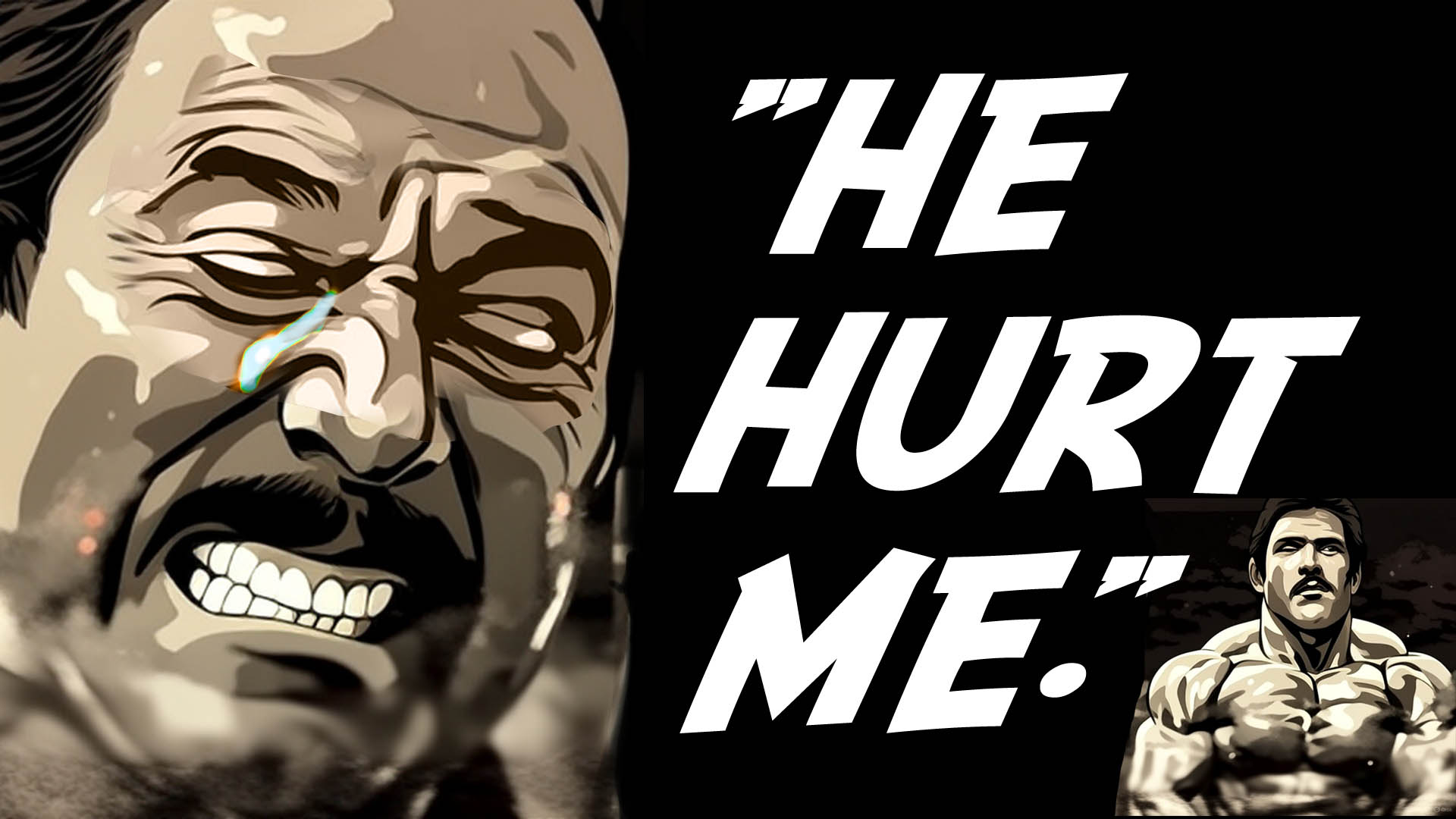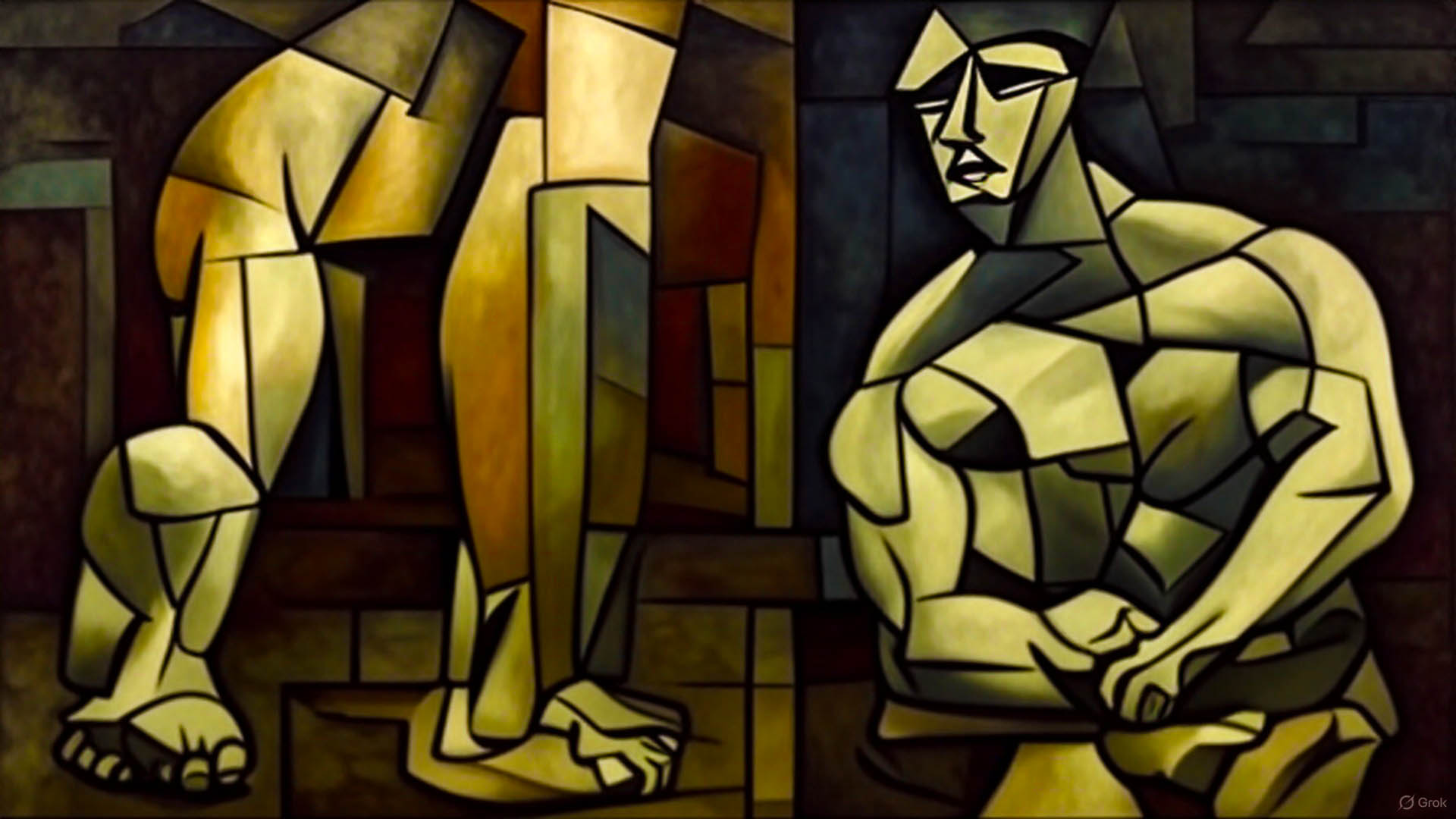
Watch above video for fuller context.
When Pete Grymkowski came calling, Joe Weider wasn’t the conqueror—but he was still standing at the final bell. That, in the mythology of muscle, was its own kind of triumph.
For years, Joe Weider—the man who had christened himself “Tiger-Rough Joe”—sold not just barbells and protein powders, but a philosophy. For a small fee, he promised ordinary men the blueprints to a “marine-tough” body and the courage to conquer fear itself. His ads read like survival manuals dressed up as fitness courses, as if a subscription to Muscle Builder could turn an office clerk into a jungle fighter. But for all the bravado, the encounters that defined Joe’s reputation weren’t in print—they were in the flesh, with Pete Grymkowski.
Neither of their two collisions ended in glory for Joe. There were no decisive victories, no storybook moments of dominance. Yet both left the same undeniable image: Joe absorbing the blows, staggering perhaps, but refusing to topple. He didn’t showcase power so much as durability. In an industry where muscle was currency, Joe’s resilience became its own kind of coin. He emerged from each skirmish battered but unbowed, less a victor than a survivor who could take punishment and still walk away.
The first clash had roots in business, not brawn. By 1979, Pete Grymkowski was more than a bodybuilder; he was a co-owner of Gold’s Gym, and the Weider magazines were his financial lifeline. In their glossy pages, Pete sold everything from protein powder to Gold’s Gym apparel. Those modest ads in the back weren’t window dressing—they accounted for nearly half of Gold’s Gym’s revenue that year. A tank top sold for $8 plus shipping, costing only $2.50 to produce. The margins were the stuff of dreams.
Then, suddenly, the ads vanished. For Pete, it wasn’t a hiccup—it was an existential threat. Without warning, the money spigot had closed. Enraged, he stormed into the Weider offices to confront Joe himself. Words were exchanged, but words did nothing. Diplomacy failed, and Pete’s temper detonated. He grabbed a tire iron and reduced Joe’s Lincoln Town Car to twisted metal and splintered glass. The message was clear: Pete Grymkowski would not be ignored.
Why the ads disappeared has remained a foggy question. Some whispered that Joe saw Gold’s Gym as a rival empire, unwelcome competition to his own brand of fitness dominion. Others suspected that Arnold himself, through his tight alliance with Weider, had nudged the decision—leveraging the magazines to force Gold’s to drop the lawsuit left behind by former owner Ken Sprague. That lawsuit, born of Arnold’s mocking comparison of gyms on national television—World Gym as a “penthouse,” Gold’s as an “outhouse”—still hung like smoke in the air.
But Pete’s fury didn’t restore the revenue. What eventually untangled the standoff wasn’t violence, but architecture. Gold’s co-owner Ed Connors approached Joe not as an adversary, but as an architect with a solution. Joe had problems with the remodeling of his Hancock Park mansion. Ed had expertise. A trade was struck: Connors would assist with the renovations, and in return, Gold’s Gym ads would quietly reappear in Weider publications. The handshake deal not only restored Pete’s cash flow but laid the foundation for a professional relationship that endured until Joe’s death in 2013.
Pete had brought the fire, but it was Ed’s pragmatism that cooled the embers. Joe’s “Tiger-Rough” persona might have been more carnival barker than black belt, but survival—enduring the storm and coming out the other side—was a philosophy both men understood.
The second clash, remembered vividly by former Gold’s Gym owner Ken Sprague, unfolded not on the streets but in the locker room of Gold’s Second Street location. The grievance this time was small—fifty dollars Joe owed Pete for tagging his name onto an article. Yet for Pete, the slight was personal. A few others looked on as Pete’s patience dissolved. In a blur, he seized Joe and hurled him into the wall. The drywall buckled under the impact, leaving a crater as though the gym itself had swallowed Joe’s head.
Sprague, never one to miss a chance at theatrics, later circled the dent with a marker, drew an arrow, and scrawled: Joe Weider’s head was here. It was part graffiti, part epitaph for Joe’s pride.
Both incidents could have spiraled into true disaster, had Joe not chosen restraint. For all his talk of martial mastery—a discipline he insisted he possessed in abundance but never let anyone see—Joe never unleashed it. Whether through wisdom or bluff, he held back. Perhaps he knew that survival, not victory, was the prize worth keeping.
And so the legend of Joe Weider’s battles with Pete Grymkowski endures—not as tales of conquest, but of endurance. In one corner, a fiery gym owner who fought with his fists and sometimes a tire iron; in the other, a promoter who talked like a tiger, absorbed punishment like a mule, and somehow always walked away.



Be the first to comment